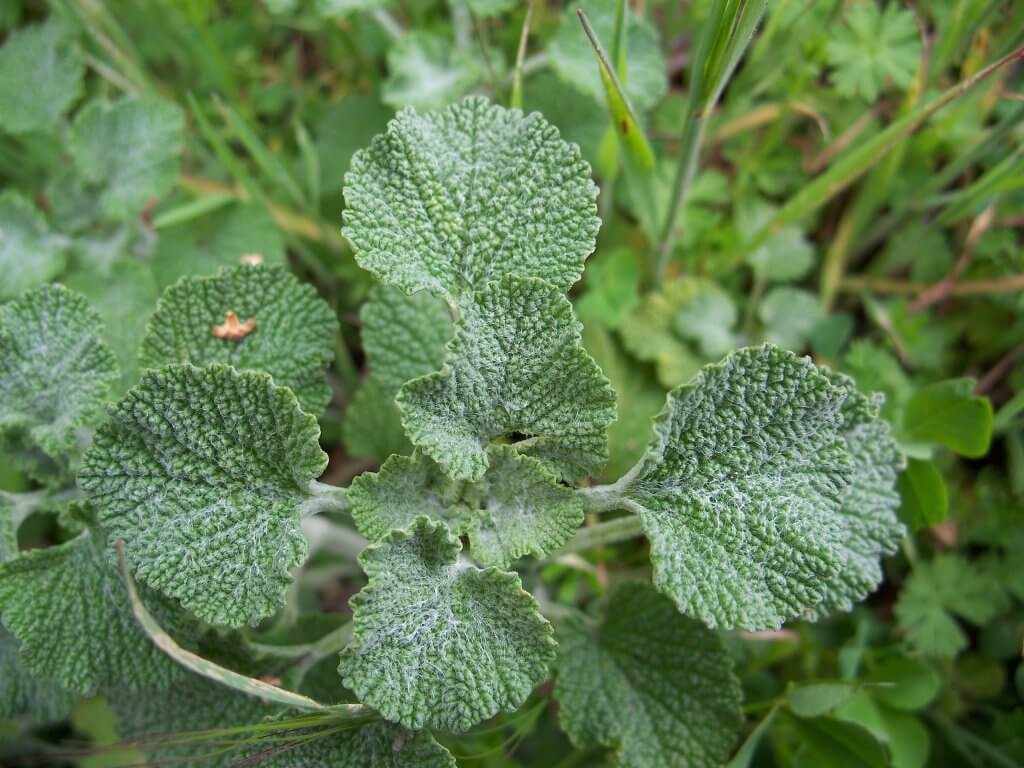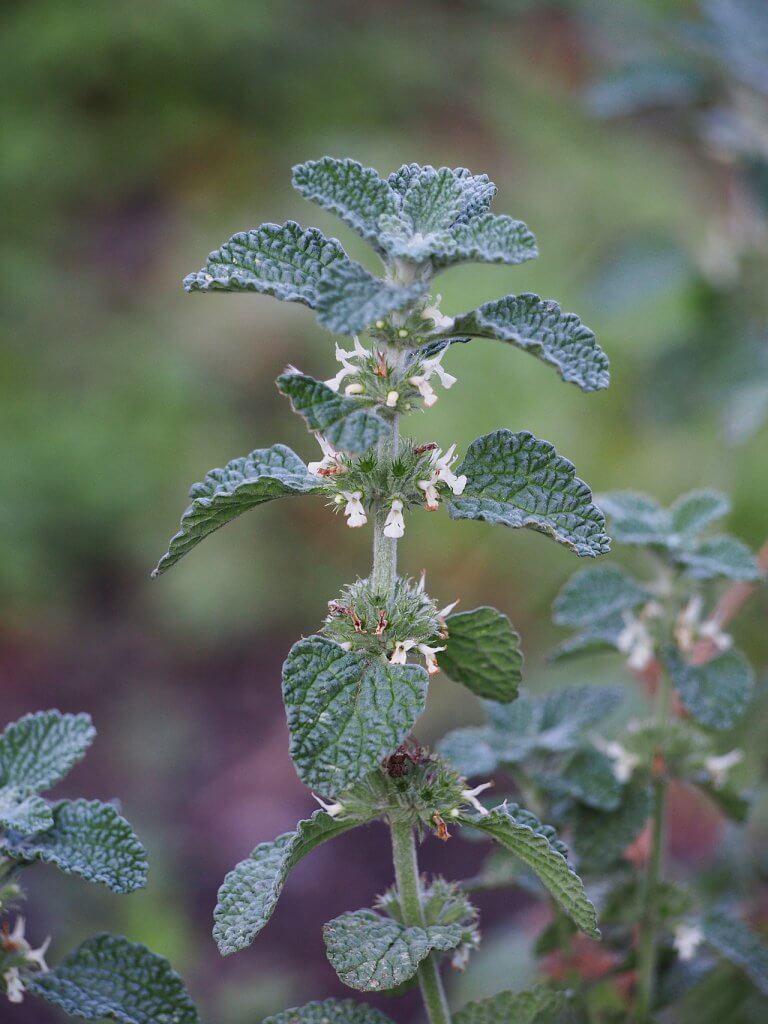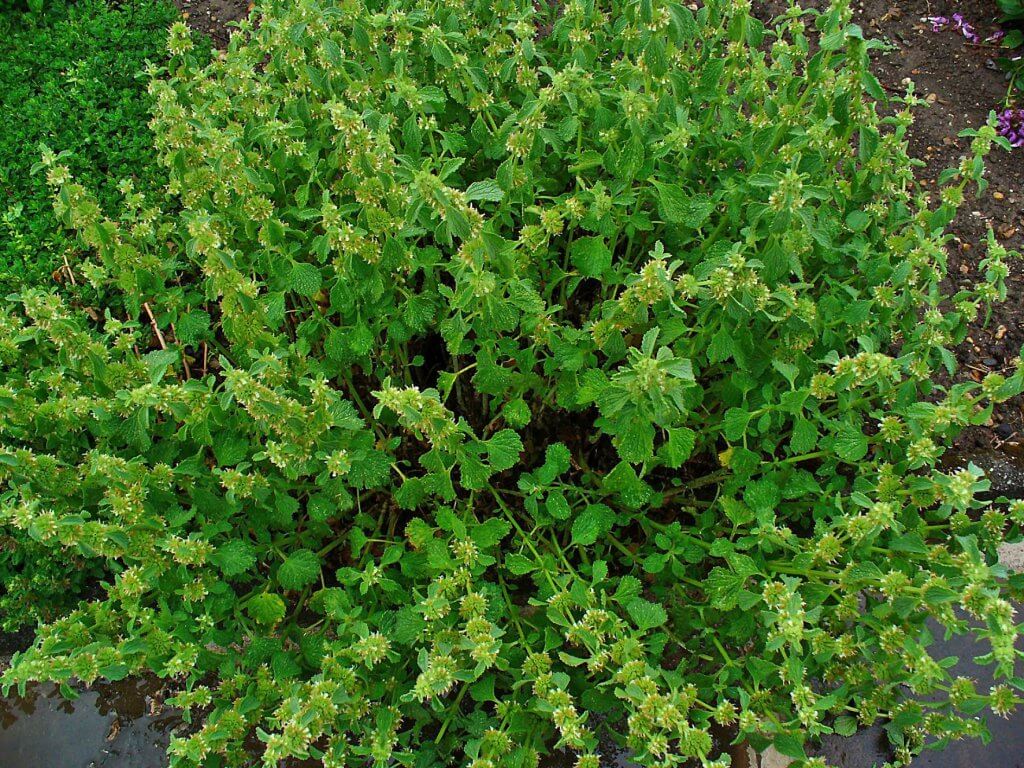Horehound (Marrubium vulgare), otherwise known as white horehound or common horehound, is a perennial herb. It is a member of the mint family, native to large areas of Europe, Northern Africa and parts of South and Central Asia. You will now find it growing across many countries, with a large population now found across the continents of America.
Fairly similar in appearance to mint, you will however notice that horehound leaves have a green-grey appearance. The leaves are serrated, crinkled and coated in fine hairs. You will usually find it grows to roughly 35cm in height. When flowering in early summer to early fall, small white flowers will emerge in tight clusters.
It is considered a weed by many, however some individuals claim great therapeutic benefits from horehound. They can be found growing in a wide variety of areas, from roadsides and pastures to grassland and meadows.

Cultivation and History of Horehound

Due to its close relation to mint, horehound can also be an invasive species. When growing within your garden you may prefer to keep it contained within a pot. It has the ability to successfully spread and survive in many wild locations. This means that horehound is incredibly easy to grow, and will usually survive a winter.
You can plant horehound using seeds, cuttings or division. Plant seeds approximately 3 weeks before the last expected frosts have finished. Sprinkle them over soil and cover with a thin layer of soil. After seedlings have appeared and begin to mature, you can plant them directly into the garden or container. Choose an area that receives full sun and has very well draining soil. To reduce any unwanted spread of horehound, cut and compost the flowers before they begin to seed.
Toxicity
You can safely consume horehound leaves in small quantities within food or herbal remedies. However research is limited on the long term effects of taking horehound. Consuming large quantities can also cause nausea and vomiting so care must be taken. If you are pregnant, breast feeding, diabetic or suffer from blood or heart conditions, it is best to avoid horehound.
Uses
Culinary uses of Horehound
Candied horehound was once a widely popular treat. You can boil dried horehound in water, then drain and combine with sugar and boil until caramelised. Pour the syrup into moulds and leave to cool before eating. Its flavor is a mixture of mild mint and root beer. Horehound beer and tea are other products that you can create with horehound.
You can also use the leaves within many culinary dishes. From salads to seafood, horehound can add another depth of mild and minty flavor.

Medicinal uses of Horehound
Horehound has a substantial medicinal history across cultures. The ancient Romans and Egyptians have been noted in many records of using horehound in their herbal concoctions. It was thought to be an antidote to poisoning and a cure for coughs and colds. Throughout Europe many herbalists used horehound tea in treating constipation, indigestion, wounds and liver problems.
Horehound may have the ability to reduce blood sugar levels. However much more research is needed to determine the full range of health benefits horehound may provide.
Did you know…
The name horehound is derived from old English words ‘hoar’ and ‘hune’, loosely translating as white, or downy, plant.
Conclusion
In conclusion, horehound will not be winning a beauty contest any time soon. Its deeply crinkled leaves and white flower clusters add texture and interest, but they are not particularly ornamental. The ancient usage of horehound, however, is very impressive. Try growing a small batch of seeds and try your hand at creating your own horehound candies or teas.
—————Written by Hannah Sweet
Hannah is a freelance writer and graphic designer from the UK. With a penchant for travelling, photography and all things botanical, she enjoys writing about a wealth of topics and issues, from conservation and slow living, to design and travel. Learn more about her writing and design services at www.sweetmeanders.co
Many of our readers find that subscribing to Eat The Planet is the best way to make sure they don't miss any of our valuable information about wild edibles.
See our privacy policy for more information about ads on this site






